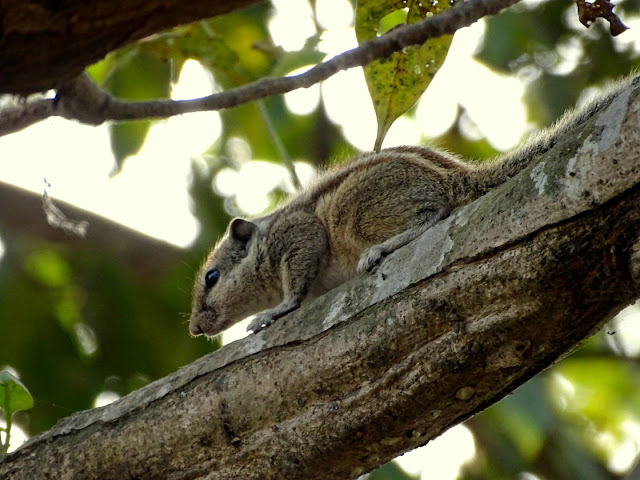The Indian palm squirrel, which scientific name is "Funambulus palmarum" and it lies in the kingdom : animalia, phylum : chordata, class : mammalia, order : rodentia, family : sciuridae, genus : funambulus, species : F. palmarum. The squirrels mainly eats nuts and fruits. They are fairly vocal, with a cry that sounds like "chip chip chip" when danger is present. They are opportunists in urban areas, and can be easily tamed and trained to accept food from humans. Naturally active, their activity reaches levels of frenzy during the mating season. They tend to be very protective of their food sources, often guarding and defending them from birds and other squirrels. Unlike some other species of squirrel, the Indian palm squirrel does not hibernate
The Indian palm squirrel have at least three stripes running along their bodies, but Funambulus pennantii has two additional paler stripes on its sides, running between hind and forelegs. Fur colour is generally grey-brown with some species being a little more reddish (rarely black). The belly is creamy white or brownish. The ears are small and triangular. The tail is covered with interspersed long black and white hairs. The ears are small and triangular. Range in size from 225–400 mm total length (including 110–120 mm long tail) and weigh 60–200 g. Like other species in the Order Rodentia, Indian palm squirrels have chisel-sharp incisor teeth that grow constantly. They are active during the day and build nests.

